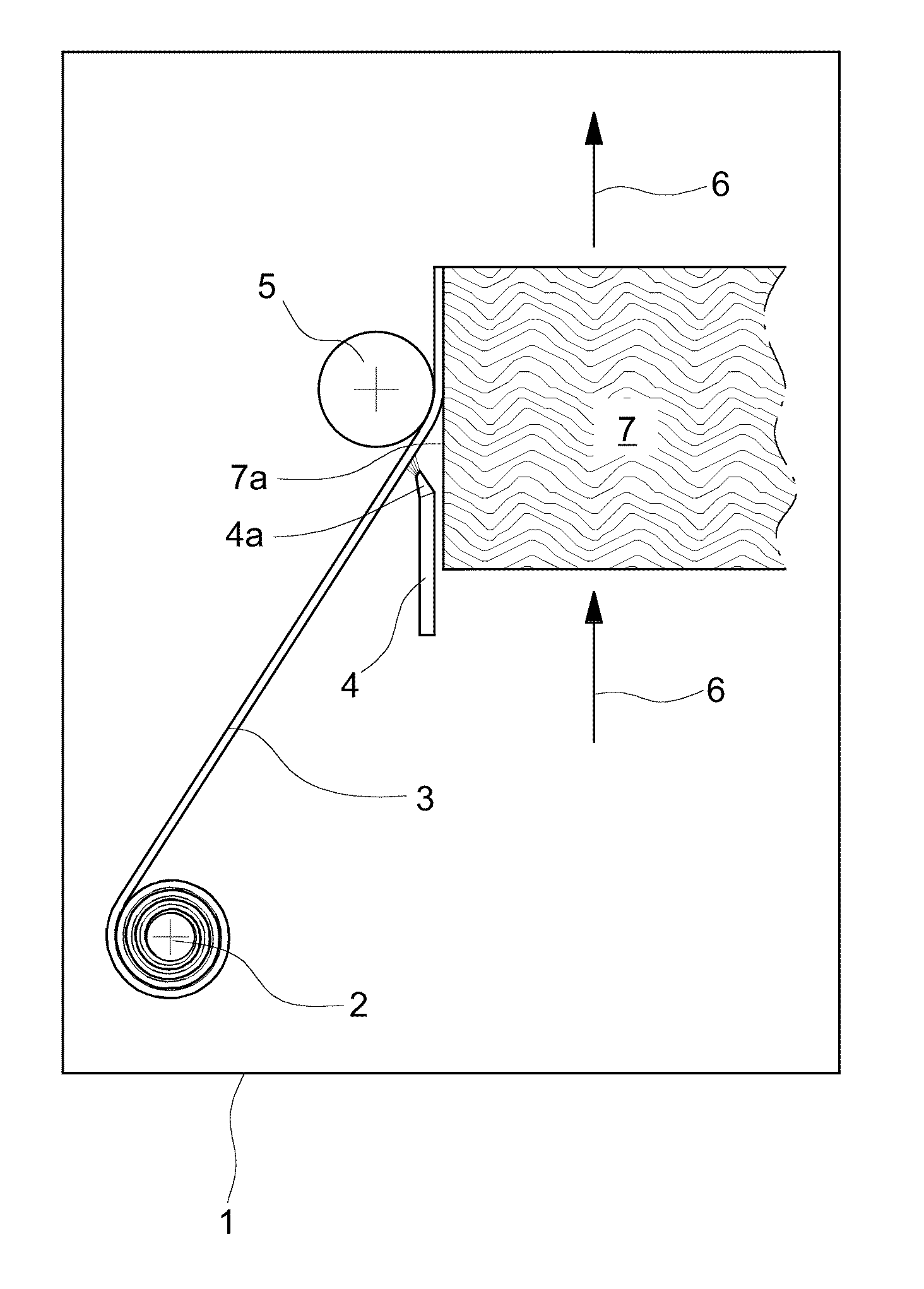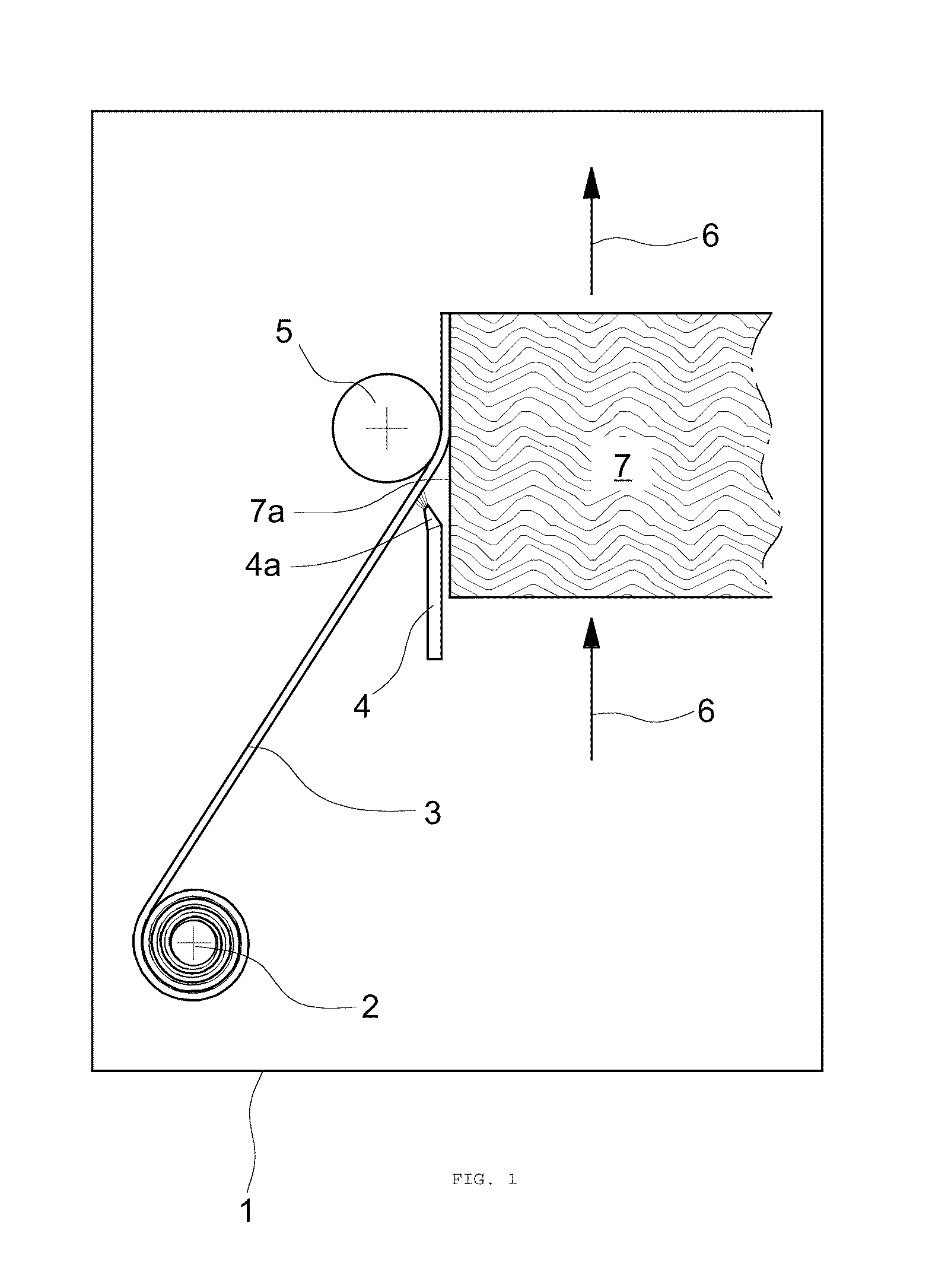Method for applying edge strips onto narrow surfaces of in particular plate-shaped work pieces and work pieces obtained in said manner
a technology of workpieces and edge bands, which is applied in the direction of other plywood/veneer working apparatus, manufacturing tools, cellulosic plastic layered products, etc., can solve the problems of non-uniform and defective bonding, high cost, and high energy consumption of hotmelt adhesives
- Summary
- Abstract
- Description
- Claims
- Application Information
AI Technical Summary
Benefits of technology
Problems solved by technology
Method used
Image
Examples
Embodiment Construction
[0020]The present invention accordingly provides—in accordance with a first aspect of the present invention—a method for attaching an edge band (edge strip) to at least one narrow face (narrow side) of an in particular panellike workpiece (material part) by jointing, the edge band being provided on its side to be joined to the workpiece (contact side) with a heat-activatable adhesive layer which is heated by irradiation prior to jointing, where in accordance with the invention the heat-activatable adhesive layer is of plasma-activatable form, in particular the heat-activatable adhesive layer is provided with at least one energy-absorbing and / or thermally conducting substance, and where, in accordance with the invention, the heating of the heat-activatable adhesive layer takes place by means of plasma irradiation.
[0021]The concept of jointing in the context of the present invention refers in particular to methods which cause formerly separate workpieces to cohere, producing a new wor...
PUM
| Property | Measurement | Unit |
|---|---|---|
| Temperature | aaaaa | aaaaa |
| Temperature | aaaaa | aaaaa |
| Thickness | aaaaa | aaaaa |
Abstract
Description
Claims
Application Information
 Login to View More
Login to View More - R&D
- Intellectual Property
- Life Sciences
- Materials
- Tech Scout
- Unparalleled Data Quality
- Higher Quality Content
- 60% Fewer Hallucinations
Browse by: Latest US Patents, China's latest patents, Technical Efficacy Thesaurus, Application Domain, Technology Topic, Popular Technical Reports.
© 2025 PatSnap. All rights reserved.Legal|Privacy policy|Modern Slavery Act Transparency Statement|Sitemap|About US| Contact US: help@patsnap.com


